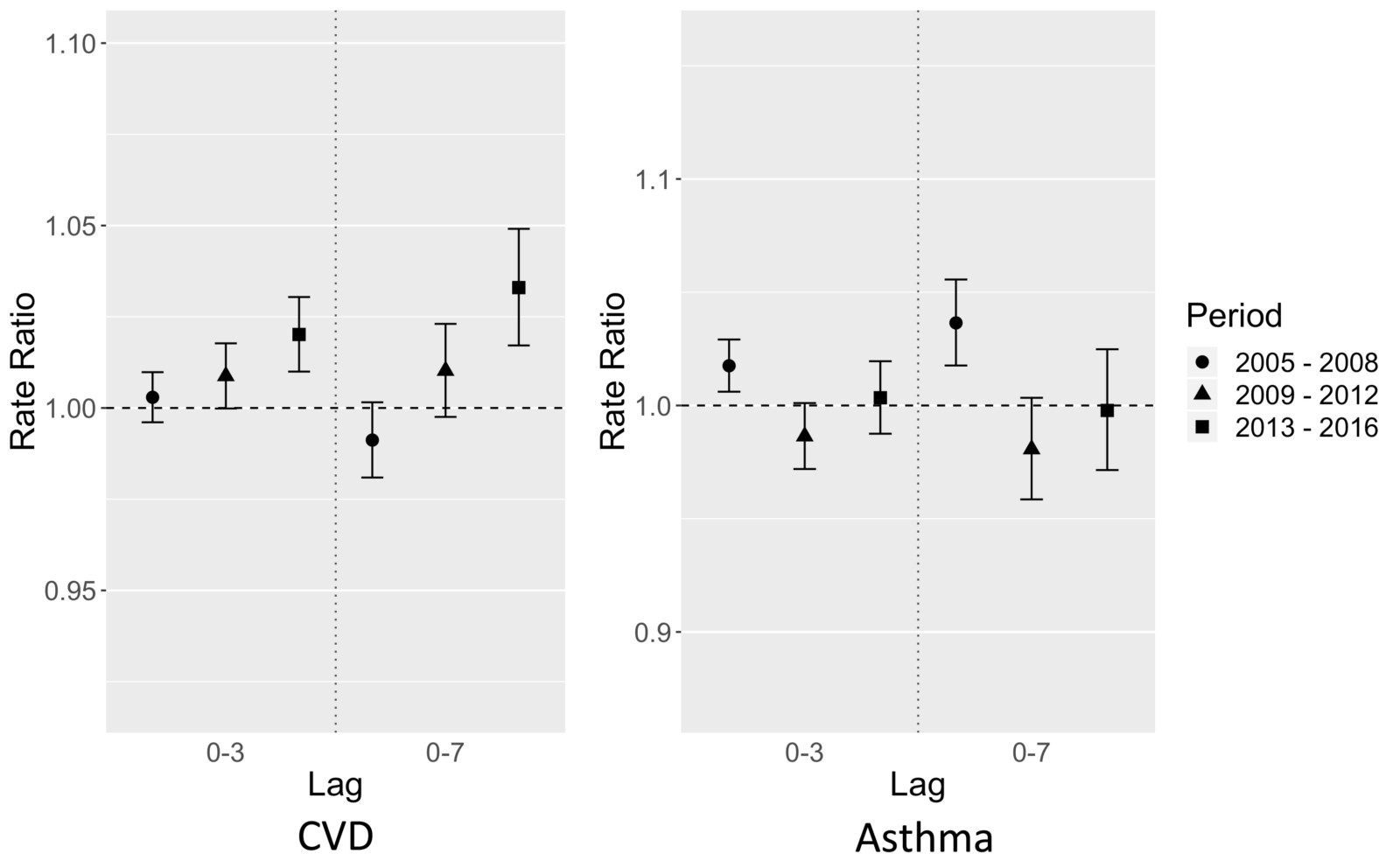Temporal changes in short-term associations between cardiorespiratory emergency department visits and PM2.5 in Los Angeles, 2005 to 2016
Emissions control programs targeting certain air pollution sources may alter PM2.5 composition as well as the risk of adverse health outcomes associated with PM2.5 (as a mixture). In this analysis, we examined temporal changes in the risk of emergency department (ED) visits for cardiovascular diseases (CVDs) and asthma associated with short-term exposure to PM2.5 in Los Angeles from 2005 to 2016, a period in which the implementation of emission control programs had led to changes in PM2.5 concentration and composition. We observed significant changes in the risk of CVD (with an increased risk) and asthma (with a decreased risk) ED visits when PM2.5 concentrations decreased over time. The observed changes in risk could be related to changes in PM2.5 composition (e.g., an increased fraction of organic carbon and a decreased fraction of sulfate) and other factors such as improvements in healthcare and differential exposure misclassification.

Bi, J., D’Souza, R. R., Rich, D. Q., Hopke, P. K., Russell, A. G., Liu, Y., Chang, H. H., & Ebelt, S. (2020). Temporal changes in short-term associations between cardiorespiratory emergency department visits and PM2.5 in Los Angeles, 2005 to 2016. Environmental Research, 190, 109967. 10.1016/j.envres.2020.109967.
 |
 |